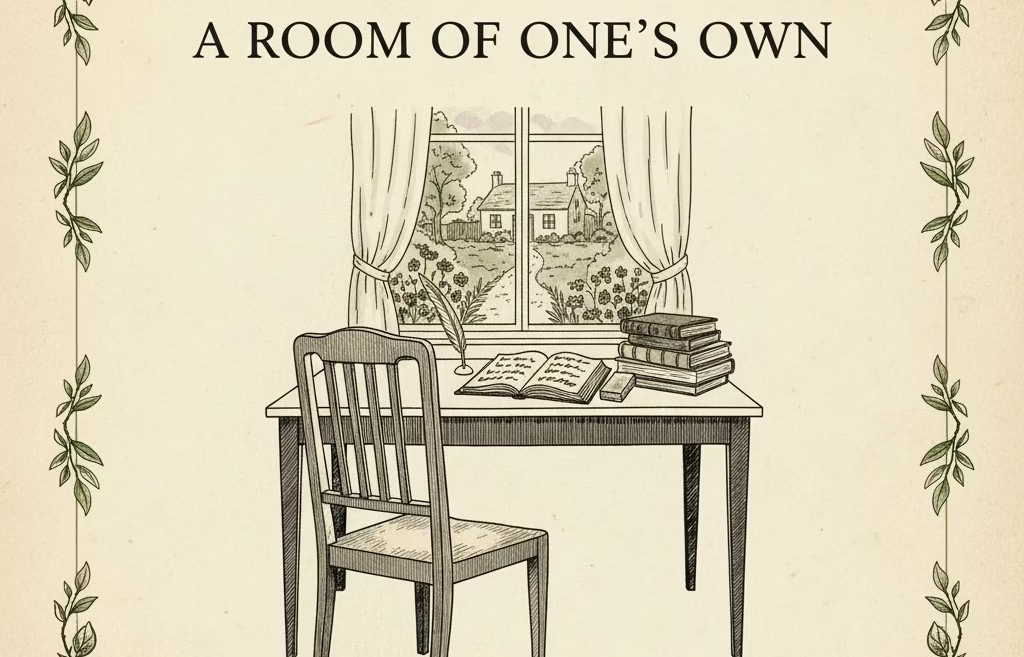INTRODUCTION
Jhumpa Lahiri’s The Namesake is a deeply evocative novel that explores the complexities of identity, culture, and belonging experienced by immigrant families. The story unfolds across two generations of the Ganguli family, originally from Calcutta (now Kolkata), India, who build new lives in the United States while striving to maintain their Bengali heritage.
The narrative begins in 1968 as Ashima and Ashoke Ganguli settle into a small apartment in Cambridge, Massachusetts. Ashoke, a graduate student at MIT, and Ashima, his young bride, face the daunting challenges of adapting to a new country far from their family and familiar customs. Their immigrant experience is marked by loneliness, cultural adjustments, and the longing for home.
When their first child is born, the significance of names and identity becomes central. Their son receives the pet name “Gogol,” after the Russian author whose book played a pivotal role in saving Ashoke’s life during a traumatic train accident in India. This name, rich in personal and cultural symbolism, embodies the novel’s central tensions: the negotiation between ancestral roots and American life.
Through Gogol’s journey from childhood to adulthood, Lahiri powerfully traces the intricate negotiation of dual identity—feeling neither fully Indian nor wholly American. His struggle reflects the broader immigrant experience of cultural dislocation and the quest for selfhood in a world of contrasting traditions.
Lahiri’s prose offers detailed and sensitive insights into family dynamics, the persistence of tradition, and the impact of generational shifts. The characters’ lives reveal the emotional landscapes of immigrants—navigating love, loss, and belonging in a world where two cultures intersect and sometimes clash.
The Namesake speaks not only to the particularities of the Bengali-American experience but also to anyone grappling with the meaning of home and identity across cultures. It is a timeless, human story of connection, change, and the enduring search for where one truly belongs.
Jhumpa Lahiri’s The Namesake: Plot Overview
The Namesake by Jhumpa Lahiri is a novel that tells the story of the Ganguli family, Indian immigrants adapting to life in America over two generations. The story begins in 1968 with Ashoke and Ashima Ganguli settling into a small apartment in Cambridge, Massachusetts. Married in an arranged marriage in Calcutta, they move to the United States as Ashoke pursues his studies at MIT. From the start, Ashima faces difficulties with homesickness and cultural alienation in this new land.
When their first child is born in an American hospital, the couple gives him a pet name, “Gogol,” after the Russian author Nikolai Gogol. This name holds deep symbolic significance because Gogol’s book saved Ashoke’s life during a train accident years earlier. Although intended as a private nickname, Gogol becomes the name by which the boy is known, symbolizing his liminal position between his Bengali heritage and American surroundings.
As Gogol grows up, he struggles with feeling neither fully American nor Bengali. His discomfort with his name and identity deepens, leading him to legally change his name to “Nikhil.” The novel follows Gogol through childhood, adolescence, and adulthood, revealing his ongoing conflicted feelings about belonging. His relationships mirror this duality—he builds complex romantic relationships with both American and Bengali women, trying to find his place.
The death of Ashoke prompts a significant turning point for Gogol. This loss brings him back into the fold of his family’s cultural traditions and leads to reflection and reconciliation with his roots. His marriage to Moushumi, a Bengali-American woman, introduces further tension as cultural expectations and personal desires conflict. Moushumi’s infidelity and their eventual divorce emphasise the difficulties of navigating cultural expectations in modern relationships.
The story concludes on a bittersweet note, highlighting transition and acceptance. Ashima plans to divide her time between Calcutta and America, reconnecting with her roots. Gogol, now older, holds onto his father’s gift—a book of Nikolai Gogol’s stories—symbolising his renewed connection to his heritage. Through this rich narrative, Lahiri explores themes of identity, family, cultural conflict, and the constant search for belonging in a multicultural world. FULL TEXT
Jhumpa Lahiri’s The Namesake: A Multi-Generational Journey
At its core, The Namesake follows Gogol Ganguli’s life. He is the American-born son of Bengali immigrants Ashoke and Ashima. Born in Cambridge, Massachusetts, Gogol’s name symbolizes the novel’s themes. It is both a burden and a bridge between heritage and identity. The novel traces his journey from childhood to adulthood. It reveals personal struggles and cultural conflicts as he navigates dual identity.
Lahiri captures the immigrant experience through Ashoke and Ashima. Their arranged marriage and move to America shape Gogol’s life. Their stories reveal loneliness, nostalgia, and resilience that define immigrant lives. These feelings grow as Gogol tries to balance his parents’ cultural hopes with his own American world.
Jhumpa Lahiri’s The Namesake: Themes
The Immigrant Experience and Cultural Dislocation
Lahiri’s novel vividly portrays the immigrant experience as one marked by both hope and alienation. Ashima’s initial loneliness, Ashoke’s trauma-survivor resilience, and Gogol’s cultural in-betweenness all highlight the struggle of adapting to a new world while preserving heritage. Lahiri’s depiction is exquisitely human—neither idealising nor romanticising the immigrant’s path, but showing the nuanced reality of dislocation.
The Significance of Naming and Identity
Central to the story is the symbolic weight of Gogol’s name. He is named after the Russian author Nikolai Gogol. This name relates to a life-saving event in Ashoke’s past. Gogol’s struggle with his name reflects broader questions of identity. The tension between his pet name “Gogol” and his formal name “Nikhil” shows his inner conflict. He feels caught between his parents’ culture and American society. This naming motif captures the novel’s deep exploration of selfhood and acceptance.
Family, Tradition, and Modernity
The novel delicately explores the dynamics between traditional family values and the modern American context. The arranged marriage of Ashoke and Ashima contrasts with Gogol’s later choices in love and life, reflecting the broader generation gap and cultural shifts that define immigrant families. Through these relationships, Lahiri interrogates themes of loyalty, cultural preservation, and the inevitable change wrought by time and circumstance.
Literary Style and Narrative Structure
Jhumpa Lahiri’s prose stands out for its clarity and precision—simple in language yet profound in emotion. The narrative flows across time and space, blending past and present seamlessly. This fluidity is symbolic of the immigrant experience itself, where memories and present realities interlace.
The novel’s structure, though episodic, unites moments that collectively tell a richly layered story. Lahiri’s attention to detail in food, language, and domestic rituals roots the narrative in a vivid cultural context, while her character-driven storytelling makes the themes deeply relatable. EXPLORE OTHER WRITERS
Reflective Insight
In today’s global world, migration affects millions. The Namesake offers a timeless reflection on belonging. Gogol’s story speaks to those shaped by many cultures. It shows identity is not fixed. Instead, it is always changing, reshaped through time.
Lahiri’s work feels personal because it mirrors her life. Yet, it also has universal reach. It touches many with its honesty and empathy.
Lahiri’s genius lies in expressing the unsaid. She captures silent tensions between love and duty, freedom and obligation, and heritage and selfhood. Furthermore, these layers open a deep, heartfelt conversation with readers. The Namesake is more than a novel—it is a companion for anyone navigating identity’s complex terrain.
Conclusion: Embracing Complexity in Identity
Jhumpa Lahiri’s The Namesake presents a rich, layered meditation on identity in the immigrant experience. Through Gogol Ganguli’s life, Lahiri shows that identity is not fixed or simple but a dynamic, sometimes conflicted journey. It is shaped by personal history, culture, and self-discovery.
In the novel’s final moments, Gogol reconnects with the book of Nikolai Gogol’s stories, a gift from his late father. This symbolizes a deep reconciliation. Gogol fully appreciates his name—not as a label to reject but as a link to his father’s sacrifices, his Bengali roots, and the larger immigrant story of his family. This moment marks a turning point where Gogol accepts that his identity blends both inherited culture and the life he built in America.
Likewise, Ashima’s choice to live between India and the U.S. highlights the theme of cultural hybridity that Lahiri weaves throughout the novel. Her growth and balance between two worlds show how first-generation immigrants honor traditions while adapting to new realities.
Lahiri’s portrayal of the Ganguli family reveals the tensions, losses, and love that define immigrant lives. Moreover, more than a tale of cultural displacement, The Namesake offers a universal reflection on belonging—to family, home, and self. It underscores that identity is an ongoing negotiation, offering no easy answers but promising deeper understanding and acceptance.





